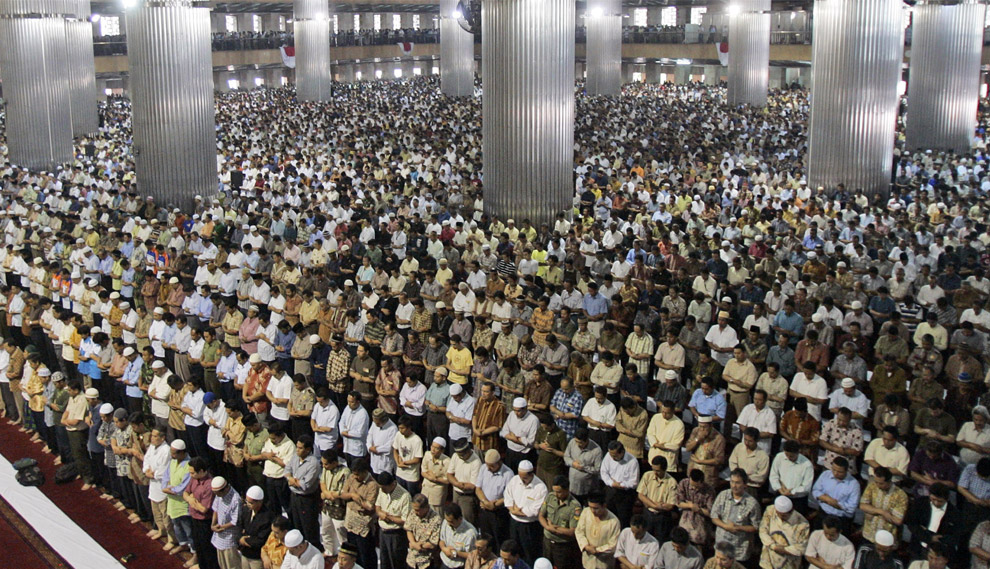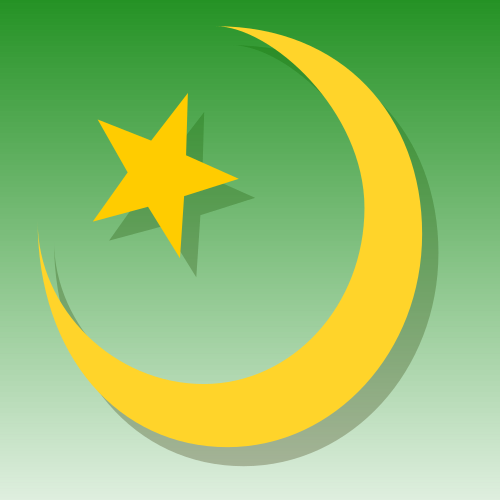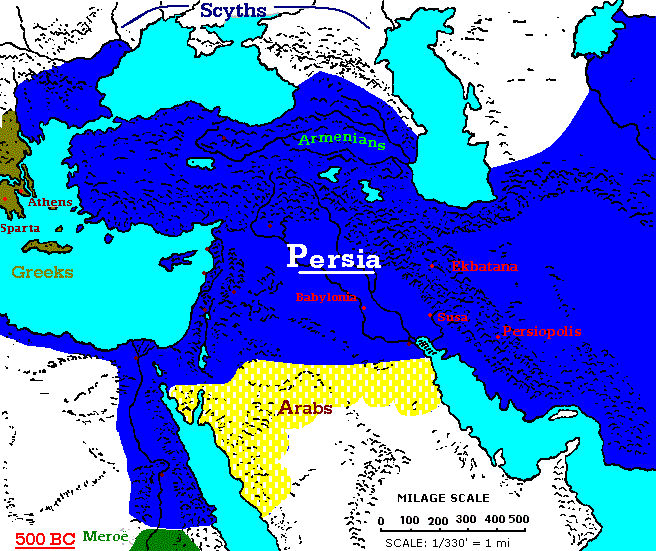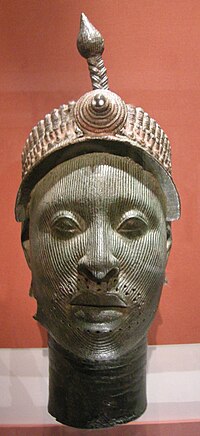1. Why are some forms of religion called Primal? Describe some of the characteristics of primal religions.
Certain forms of religion are known as Primal, because they were "the traditions of non-literate people." They do not depend on scriptures or written teachings, as many modern religions do (ex: Christianity: The Bible, Islam: The Quran, etc.). Primal religions are passed down orally, from generation to generation through myths and stories. Primal religions are most often the traditions of tribal peoples.
2. What elements of the natural and human world did the Ancestors create or establish in the period of the Dreaming?
During the period of "the Dreaming", the Ancestors createsd the first human beings. They established certain tribes and the customs, social rules, and language of those tribes. They left symbols, found in the forms of rock paintings, rock formations, natural landmarks, etc.
3. What survives in the symbols left behind by the Ancestors?
The spiritual essence of the Ancestors lives on through the symbols that they left behind. The sites in which these symbols are located are considered sacred, and only certain individuals are allowed to visit them. These particular sites must be approached in a special way, as they are thought by the Aboriginies to be "charged with sacred power.".
4. Explain the terms
totem and
taboo.
The term
totem, refers to an animal or natural object considered as being ancestrally related to a given
kin or descent group taken as it's symbol (a symbol, especially one held in high
regard).
Taboo is a system of social ordering that dictates that specific objects and activities, owing to their sacred nature, are set aside for specific groups and are strictly forbidden to others; common to many primal peoples, including the Australian Aborigines; a Polynesian language (among some Polynesian peoples, a sacred prohibition put
opon certain people, things or acts which makes them untouchable, unmentionable,
etc.).
5. Why is ritual essential if Aboriginal life is to have meaning?
To Aboriginies, it is only through ritual that the sacred power of the Dreaming can be accessed and experienced. Also, the Aboriginal religion is "the process of recreating the mythic past of the Dreaming in order to tap it's sacred power.".
6. How did Aboriginal rituals originate?
Aboriginal rituals are based on a particular myth that 'tells of certain actions of the Ancestors during the Dreaming.". The rituals originated during the Dreaming, when the Ancestors created certain aspects of the world that we live in today.
7. What purposes are served by Aboriginal initiation rituals?
Aboriginal initiation rituals "awaken young people to this spiritual identity, and redefine their social identity within the tribe.". The initiation rituals also symbolize the death of childhood, and prepares the way for the spiritual rebirth, which is a necessary step toward adulthood.
8. Identify two acts of Dieri initiation rituals that symbolize death.
The first initiation ritual, (intended as a symbolic death), the initiate's two lower middle teeth were knocked out and buried in the ground. The main initiation ritual, the Wilyaru, consisted of men taking turns in cutting the forearms of the boy to be initiated (the initiate), until the booy's arms were caked with dried blood.
9. In what part of Africa do the Yoruba live?
The Yoruba live in the western regions of central Africa (Nigeria, Benin and Togo). ("The Yoruba people are not a unified nation, but a group of people with a common language and culture.").
10. Why has the city of Ife always been the center of Yoruba religion?
Ife has always been the center of the Yoruba religion, due to the fact that (the Yoruba believe) the city was there when the god orisha-nla first began to create the world.
11. Briefly describe the Yoruba understanding of the cosmos.
The Yoruba believe that reality is divided into two separate worlds: heaven and earth. They believe that Heaven is the "invisible home of the gods and ancestors". Earth, however, is the world of normal experience, "the visible home of human beings", (who are descended from the gods.).
12. Who is Olorun, and what is his role in Yoruba religion?
Olorun, according to the Yoruba, is "the primary, original source of power in the universe." All life forms owe their existence to him. However, he is hardly involved in human affairs, and there are no major shrines or sacrifices made to Olorun. Instead, the Orishas function as mediators between Olorun and human beings.
13. What are the
orishas? Explain their significance in the religious life of the Yoruba.
The Orishas are lesser deities (compared to the god Olorun), however, they are very significant to the religious life of the Yoruba people. All are sources of sacred power, and can both help or harm humans (depending on how well their particular appeasment rituals are carried out).
14. Name and briefly describe at least two of the
orishas.
One of the Orishas is Orisha-nla, who (most Yoruba believe) created the earth. The most complex Orisha is Esu, who containd both good and evil properties. Esu mediates between heaven and earth, and is therefore included in the worship of any other orishna, and has a place in every shrine.
15. What is a trickster figure?
A trickster figure is a type of supernatural being who tends to disrupt the normal course of life, found among many primal peoples.
Ex: Esu (among Yoruba), and Inktomi (among the Lakota.).
16. Describe the two types of Yoruba ancestors.
The two types of Yoruba ancestors are the Family Ancestors and the Deified Ancestors. The Family Ancestors earned a good reputation and lived to a ripe old age, and are worshipped only by their own families. Deified Ancestors were important human figures known throughout Yoruba society, and are worshipped by large numbers of people.
17. Describe the role of Yoruba ritual practitioners.
Ritual practitioneers mediate between the gods and ancestors in heaven and the human beings on earth. The ritual practitioneers adressed the needs of worshippers attempting to fulfill certain needs, or communicate with the appropriate deity or ancestor.
18. What is divination, and why do the Yoruba regard it as essential?
Divination is the art or practice that seeks to forsee or fortell future events or discover
hidden knowledge usually by the interpretation of omens or by the aid of
supernatural powers; unusual insight: intuitive perception. It is essential, due to the fact that it is essential for the Yoruba people to know their own future, in order to determine how to proceed with one's life.
19. According to the interpretation of the latest evidence, when and how do scholars think human beings first came to North America?
Scholars believe that humans first came to North America about 20,000 to 30,000 years ago. They crossed the Bering Strait (from Asia), and eventually spread out and inhabited large regions of both North and South America.
20. Why is the religion of the Plains Indians of vital interest among native peoples throughout North America?
The religion of the Plains Indians are of vital interest among native peoples, due to the fact that it comprised of more than thirty tribes speaking seven distinct languages.
21. What is Wakan Tanka?
Wakan Tanka is the Lakota name for "the supreme reality" ("most sacred"). It also means "Great Spirit", or "Great Mysterious". It refers to sixteen separate deities.
22. Who is Inktomi?
Inktomi is one of the first human beings, and the Lakota trickster figure. He taught the first humans their ways and customs, however, he is used as a moral lesson about mistakes and errors of judgement.
23. Briefly describe Lakota beliefs regarding death and the afterlife.
The Lakota people believe that when a person reaches death, four souls depart that person. One of those souls journeys along the "spirit path" of the Milky Way, and waits to be judged by an old woman, who will either allow it to pass on, or return as a ghost to earth.
24. What do individuals try to gain access to by going on a vision quest?
Individuals on a vision quest gain access to spiritual power, that will "ensure greater sucess in activities such as hunting, warfare, and curing the ill." It is supervised by a medicine man or woman, or a spiritual leader who gives the individual specific instructions beforehand, and interprets the content of the vision after the individual returns.
25. Briefly describe the structure and function of the sweat lodge.
The sweat lodge is intended to represent the universe. It is a "dark and airtight hut made of saplings and covered with animal skins". Heated stones are placed in the center and water is sprinkled over them by the medicine man or woman of the tribe. The hot steam that pours from the rocks causes the participants to sweat profusely, symbolizing physical and spiritual purification.
26. Describe a typical vision experienced by a person who undertakes a vision quest.
On a vision quest, a typical vision comes to the participant near the end of the quest. It is seen to arrive in the form of an animal, and object or a force of nature, and most often there is a specific message that is communicated to the participant, along with the initial vision.
27. Among the Blackfeet tribe, who presides over the Sun Dance?
A sacred leader, specifically a medicine woman of "outstanding moral character".
28. What is the
axis mundi in general? What is the
axis mundi in the Sun Dance?
The Axis Mundi is the "world center" (the connection between Heaven and Earth); Travel
correspondence is made between higher and lower realms. Communication from lower
realms may ascend to higher ones, and blessings from higher realms may descend
to lower ones and be disseminated to all. In the Sun Dance, the
axis mundi would be a cottonwood tree, in which Native Americans would place in the center of a ring of twenty- eight poles (representing the 28 days of the lunar calendar).
29. Why do some participants in the Sun Dance skewer their chests and dance until their flesh tears?
They believe that the only thing that htey truly own is hteir own bodies, so they believe that the only suitable sacrifice to the "supreme being", is bodily mutilation.
30. In what two ways does the Aztec tradition defy the description of a primal religious tradition? In what ways is the Aztec tradition like other primal religious traditions?
Unlike other civilizations, the Aztecs were a highly developed civilation (they had a population of 15 million). However, Aztec tradition is still closely realted to primal religious tradition, through the fact that Aztec religion emphasized the interrealtionship between myth and ritual, like other primal religions.
31. What geographical area did Mesoamerica include?
Mesoamerica included most of present- day Mexico, Honduras, Nicaragua and Costa Rica.
32. According to Aztec cosmology, what god created and ordered the world? What ancient city is the origin of the cosmos?
According to Aztec cosmology, Teotihuacan created the sun, which is the source for all life. The ancient city of Teotihuacan is considered by Aztecs to be "the origin of the cosmos.". A cave inside the city was considered the true "center of the Universe", due to the way that the city was designed and layed- out.
33. Who was Topiltzin Quetzalcoatl? What was his significance for the Aztecs?
Topiltzin Quetzalcoatl was the long- lost priest- king of the Toltecs.
34. What did the Aztecs call their present age? What did they anticipate it's fate to be?
The Aztecs called their present age "The Age of the Fifth Sun". They believed that four previous suns had already been destroyed and that the fifth would meet a similar fate. They believed that they only way to prevent this from happening was to nourish the sun continually through human sacrifice.
35. How did the Aztecs understand the spatial world?
The Aztecs understood the spatial world as having four quadrants that extended outward from the center of the universe (the
axis mundi). They believed that the
axis mundi connected the earthly realm to the "many- layered heavenly realm" above, and the "many- layered underworld" below.
36. Why did the Aztecs regard each human being as sort of
axis mundi?
The Aztecs regarded each human as an
axis mundi, due to the fact that they offered up certain sacrifices to specific forces. For example, the heart would be offered up to the sun, as a way to "sustain the fragile cosmos."
37. What were the special religious capabilities of the Aztec knowers of things?
The Aztec "knowers of things" were able to communicate with the gods and make offerings through language, versus through sacrifice. They also favored wit and commonly employed riddles.
38. What historical coincidence contributed to the fall of Tenochtitlan to the Spaniards?
The fall of Tenochtitlan was partially due to the Aztec's religion. When Cortes and his Spanis army arrived in 1521, the Aztec king, Moctezuma II (Montezuma) believed Cortes to be the long- lost priest- king, Topiltzin Quetzalcoatl, which eventually led to the fall of the city, and eventually, the collapse of the Aztec Empire.
39. How does the popular Day of the Dead show the survival of Aztec religious culture?
The celebration (which takes place at the end of October, and beginning of November), joins both the living and the dead through festive and spiritually meaningful rituals. They also perform other rituals of a similar nature/form throughout the course of the year, devoted to the showing and displaying of Aztec religious culture.
40. What three themes are shared by the primal religions studied in this chapter?
One theme that is shared by the four primal religions, is that the boundaries between the supernatural and the human worlds are easily crossed. Another theme is the "all-encomapssing" nature of religion.
 - Pakistan
- Pakistan 1.) List and explain the five pillars of faith:
1.) List and explain the five pillars of faith:
 2.)
2.) 


![African dance: Yoruba in Nigeria [Credit: Frank Speed]](http://media-3.web.britannica.com/eb-media/32/42132-003-D802648C.jpg)
![Yoruba cap mask [Credit: Photograph by Jenny O’Donnell. Indianapolis Museum of Art, gift of Mr. and Mrs. Harrison Eiteljorg, …]](http://media-2.web.britannica.com/eb-media/05/134405-003-DD854939.jpg) Yoruba Cap Mask: 1930-60
Yoruba Cap Mask: 1930-60 ![Yoruba female figure [Credit: Photograph by Katie Chao. Brooklyn Museum, New York, gift of Mr. and Mrs. Joseph Gerofsky in honor …]](http://media-1.web.britannica.com/eb-media/98/134498-003-91D793A6.jpg) Yoruba Female Figure: Late 1800's
Yoruba Female Figure: Late 1800's
![Yoruba mask [Credit: Photograph by Lisa O’Hara. Brooklyn Museum, New York, Museum Expedition 1922, Robert B. Woodward Memorial Fund, 22.1692]](http://media-3.web.britannica.com/eb-media/10/132910-003-C9E0C1AD.jpg) Yoruba Mask: 1922
Yoruba Mask: 1922 
![Yoruba ceremonial robe [Credit: Photograph by Jenny O’Donnell. Indianapolis Museum of Art, Martha Delzell Memorial Fund, accession number 2005.30]](http://media-2.web.britannica.com/eb-media/63/134463-003-FA0395DA.jpg)